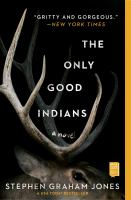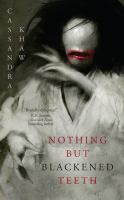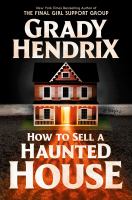 The Shining Girls by Lauren Beukes (2013)
The Shining Girls by Lauren Beukes (2013)
How do you catch a serial killer who is elusive because he travels through time? This is the central problem of Lauren Beukes The Shining Girls. Protagonist Kirby is left badly scarred, both emotionally and physically, when she encounters the demonic Harper in a 1989 knife attack while walking her dog on the beach. By 1993, she’s grown determined to heal her soul by catching her still unidentified attacker. With the help of coworkers at the newspaper where she’s a student intern, Kirby embarks on a mission to track him down. As she stumbles upon clues to Harper’s identity—and as he continues to accrue victims in random chronological order across a span of almost seventy years—Kirby can’t believe what she’s discovered: a killer who leaps across decades to commit the most heinous, vicious attacks on women he first meets as children—his “shining girls.”
 Horrorstor by Grady Hendrix (2014)
Horrorstor by Grady Hendrix (2014)
I don’t usually like blended genres—but Gary Hendrix’s comedy/horror novel Horrorstor won me over. Set in the Cleveland area, Horrorstor focuses on the employees who work at an Ikea knockoff superstore called Orsk, with similar pseudo-Scandinavian names for the merchandise. The chapters are highlighted by pages from the Orsk catalog, with funny tongue-in-cheek descriptions of the utilitarian merch, which Hendrix later uses to signal the change in tone from comedy to horror. The plot involves five Orsk employees who end up spending the night in the store after it’s vandalized during evening closures for several weeks in a row. Who—or, rather, what—is causing the nightly mayhem becomes the central problem for this motley crew to solve. One warning: if you have difficulty tolerating graphic depictions of physical torment as part of the horror, this might not be the book for you.
 The Only Good Indians by Stephen Graham Jones (2020)
The Only Good Indians by Stephen Graham Jones (2020)
This horrifying novel explores terror from the vantage point of Native American traditions—those that are kept and those that are tragically broken. Through a series of escalating accidents, maimings and murders, our protagonists—a group of four middle aged men who, when they were younger, had broken tribal laws—learn the consequences of their youthful indiscretion in devastating ways. But is the phantom stalking them imagined purely from their own guilt? Or is it something rooted more deeply in their tribe’s beliefs?
 Nothing But Blackened Teeth by Cassandra Khaw (2021)
Nothing But Blackened Teeth by Cassandra Khaw (2021)
If you’re a poet at heart, but still love to shiver, then Khaw’s Nothing but Blackened Teeth is for you. Rife with metaphor and simile, Khaw’s book is a slow-build tale mining horror from Asian mythology. It’s a short book, more novella than novel, and it focuses on protagonist Cat’s perspective as she attends a “haunted house wedding” with two old friends—the only guests aside from the betrothed couple, also old friends and acquaintances of Cat. The addition of a traditional (and angry) Japanese spirit complicates the group’s wedding plans. This is a book that takes a while to get to the real horror, but the ending is worth the wait—it’s truly ghastly.
 How to Sell a Haunted House by Grady Hendrix (2023)
How to Sell a Haunted House by Grady Hendrix (2023)
Another by author Grady Hendrix: his latest novel is made for lovers of the Chucky and Annabelle movie franchises. When Louise’s and brother Mark’s parents are killed in a car crash, their estate is left to these adult orphans to sort out. Unfortunately, this brother and sister have been non-communicative for many years based on fraught family history. Cleaning up their parents’ home isn’t made any easier by the fact that Mom was a well known puppeteer who over the years had fabricated hundreds of puppets and dolls, all of which remain, stuffed floor to ceiling, in her home office. As the puppets show signs of malevolent life, Louise and Mark’s relationship undergoes unexpected and transformative changes, resulting in startling revisions to their family’s recollected history—and escalating violence by their mother’s favorite puppet.
